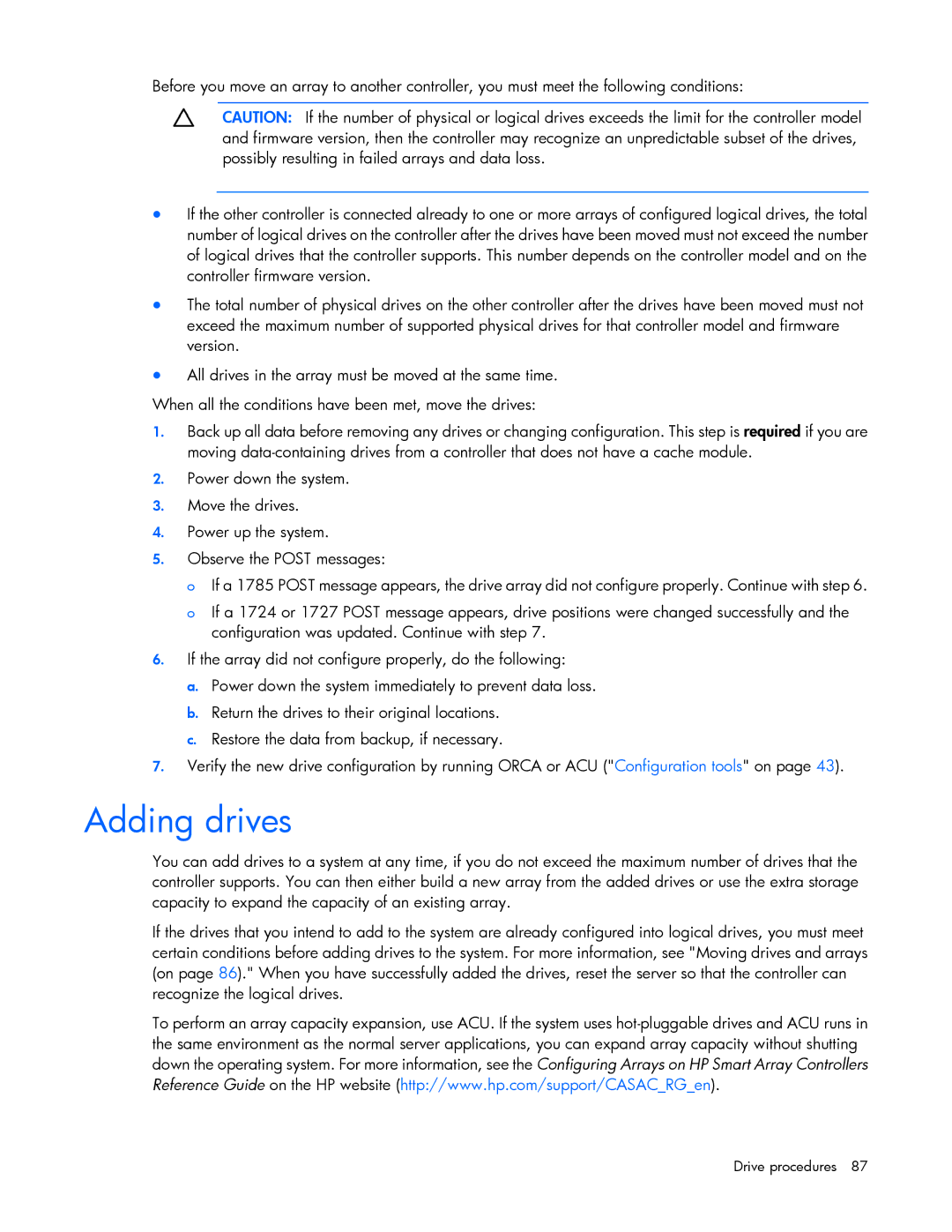
Before you move an array to another controller, you must meet the following conditions:
CAUTION: If the number of physical or logical drives exceeds the limit for the controller model and firmware version, then the controller may recognize an unpredictable subset of the drives, possibly resulting in failed arrays and data loss.
•If the other controller is connected already to one or more arrays of configured logical drives, the total number of logical drives on the controller after the drives have been moved must not exceed the number of logical drives that the controller supports. This number depends on the controller model and on the controller firmware version.
•The total number of physical drives on the other controller after the drives have been moved must not exceed the maximum number of supported physical drives for that controller model and firmware version.
•All drives in the array must be moved at the same time.
When all the conditions have been met, move the drives:
1.Back up all data before removing any drives or changing configuration. This step is required if you are moving
2.Power down the system.
3.Move the drives.
4.Power up the system.
5.Observe the POST messages:
oIf a 1785 POST message appears, the drive array did not configure properly. Continue with step 6.
oIf a 1724 or 1727 POST message appears, drive positions were changed successfully and the configuration was updated. Continue with step 7.
6.If the array did not configure properly, do the following:
a.Power down the system immediately to prevent data loss.
b.Return the drives to their original locations.
c.Restore the data from backup, if necessary.
7.Verify the new drive configuration by running ORCA or ACU ("Configuration tools" on page 43).
Adding drives
You can add drives to a system at any time, if you do not exceed the maximum number of drives that the controller supports. You can then either build a new array from the added drives or use the extra storage capacity to expand the capacity of an existing array.
If the drives that you intend to add to the system are already configured into logical drives, you must meet certain conditions before adding drives to the system. For more information, see "Moving drives and arrays (on page 86)." When you have successfully added the drives, reset the server so that the controller can recognize the logical drives.
To perform an array capacity expansion, use ACU. If the system uses
Drive procedures 87
